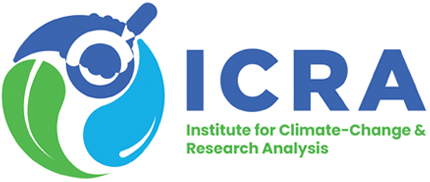Introducing the Children’s Climate Risk Index is the first comprehensive analysis of climate risk from a child’s perspective. It ranks countries based on children’s exposure to climate and environmental shocks, such as cyclones and heatwaves, as well as their vulnerability to those shocks, based on their access to essential services.
The report finds approximately 1 billion children – nearly half the world’s 2.2 billion children – live in one of the 33 countries classified as “extremely high-risk”. The findings reflect the number of children impacted today; figures are likely to get worse as the impacts of climate change accelerate.
Somalia is among these countries, with a ranking of 4th. The report found Somali children are highly exposed to soil and water pollution and riverine flooding, but also that investments in social services, particularly child health, and nutrition as well as water, hygiene, and sanitation can make a significant difference in our ability to safeguard their futures from the impacts of climate change.
“The climate crisis is a child’s rights crisis,” said UNICEF Somalia Representative Mohamed Ayoya. “Building communities’ resilience is pivotal in protecting Somali children and their future from the impacts of a changing climate and degrading environment. We need to act collectively and invest in critical water, healthcare, and education services children depend upon to survive and thrive.”
The report also reveals a disconnect between where greenhouse gas emissions are generated, and where children are enduring the most significant climate-driven impacts. The 33 extremely high-risk countries collectively emit just 9 percent of global CO2 emissions. Conversely, the 10 highest emitting countries collectively account for nearly 70 percent of global emissions. Only one of these countries is ranked as ‘extremely high-risk’ in the index.
“The frightening environmental changes we are seeing across the planet are being driven by a few but experienced by many,” said Representative Ayoya. “We must urgently reduce greenhouse gas emissions and work as a global community to build a better world for all children.”
Without the urgent action required to reduce greenhouse gas emissions, children will continue to suffer the most. Compared to adults, children require more food and water per unit of their body weight, are less able to survive extreme weather events, and are more susceptible to toxic chemicals, temperature changes, and diseases, among other factors.
UNICEF is calling on governments, businesses, and relevant actors to:
Increase investment in climate adaptation and resilience in key services for children. To protect children, communities and the most vulnerable from the worst impacts of the already changing climate, critical services must be adapted, including water, sanitation, and hygiene systems, health, and education services.
Reduce greenhouse gas emissions. To avert the worst impacts of the climate crisis, comprehensive and urgent action is required. Countries must cut their emissions by at least 45% (compared to 2010 levels) by 2030 to keep warming to no more than 1.5 degrees Celsius.
Provide children with climate education and greens skills, critical for their adaptation to and preparation for the effects of climate change. Children and young people will face the full devastating consequences of the climate crisis and water insecurity, yet they are the least responsible. We have a duty to all young people and future generations.
Include young people in all national, regional, and international climate negotiations and decisions, including at COP26. Children and young people must be included in all climate-related decision-making. Ensure the recovery from the COVID-19 pandemic is green, low-carbon, and inclusive so that the capacity of future generations to address and respond to the climate crisis is not compromised.

